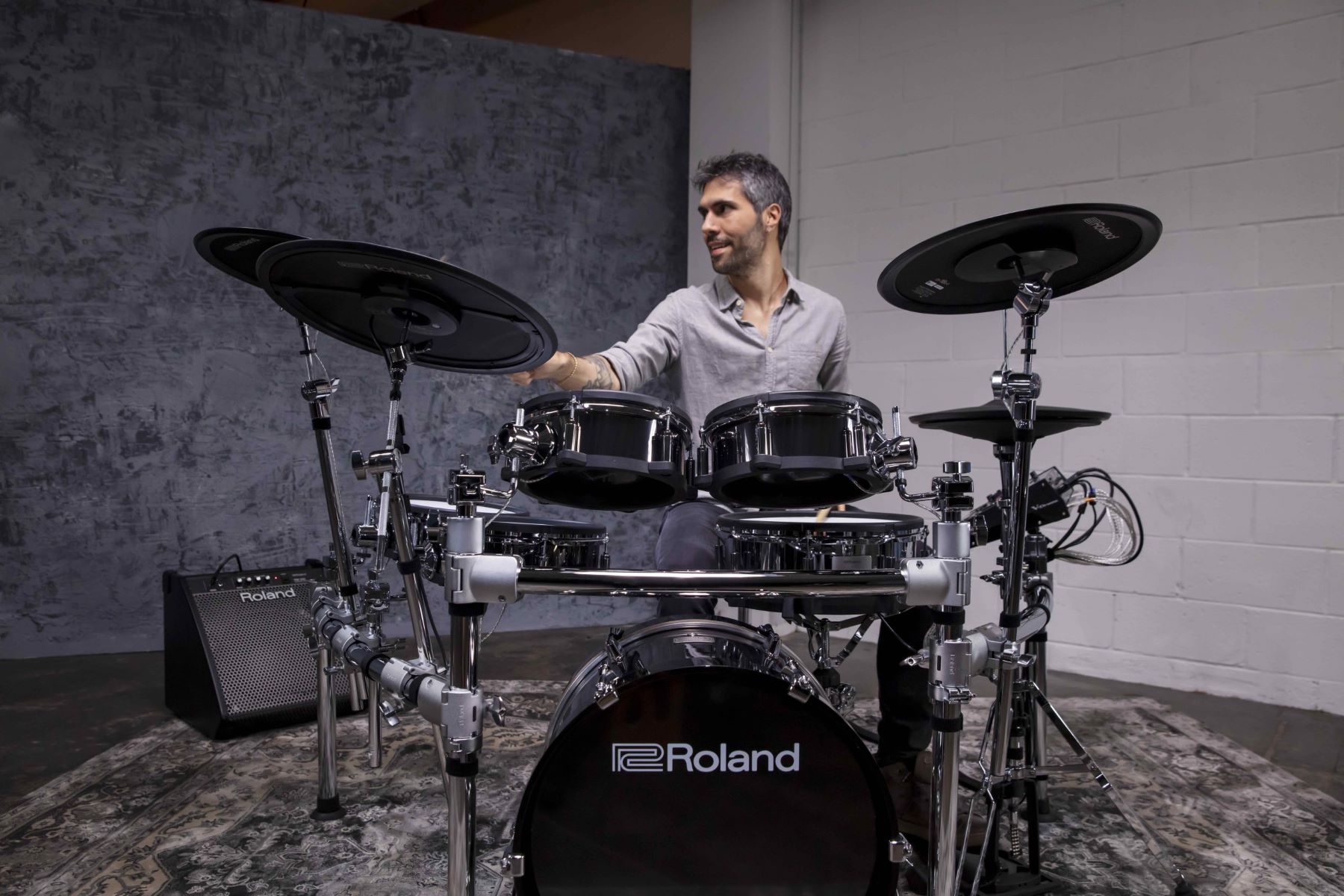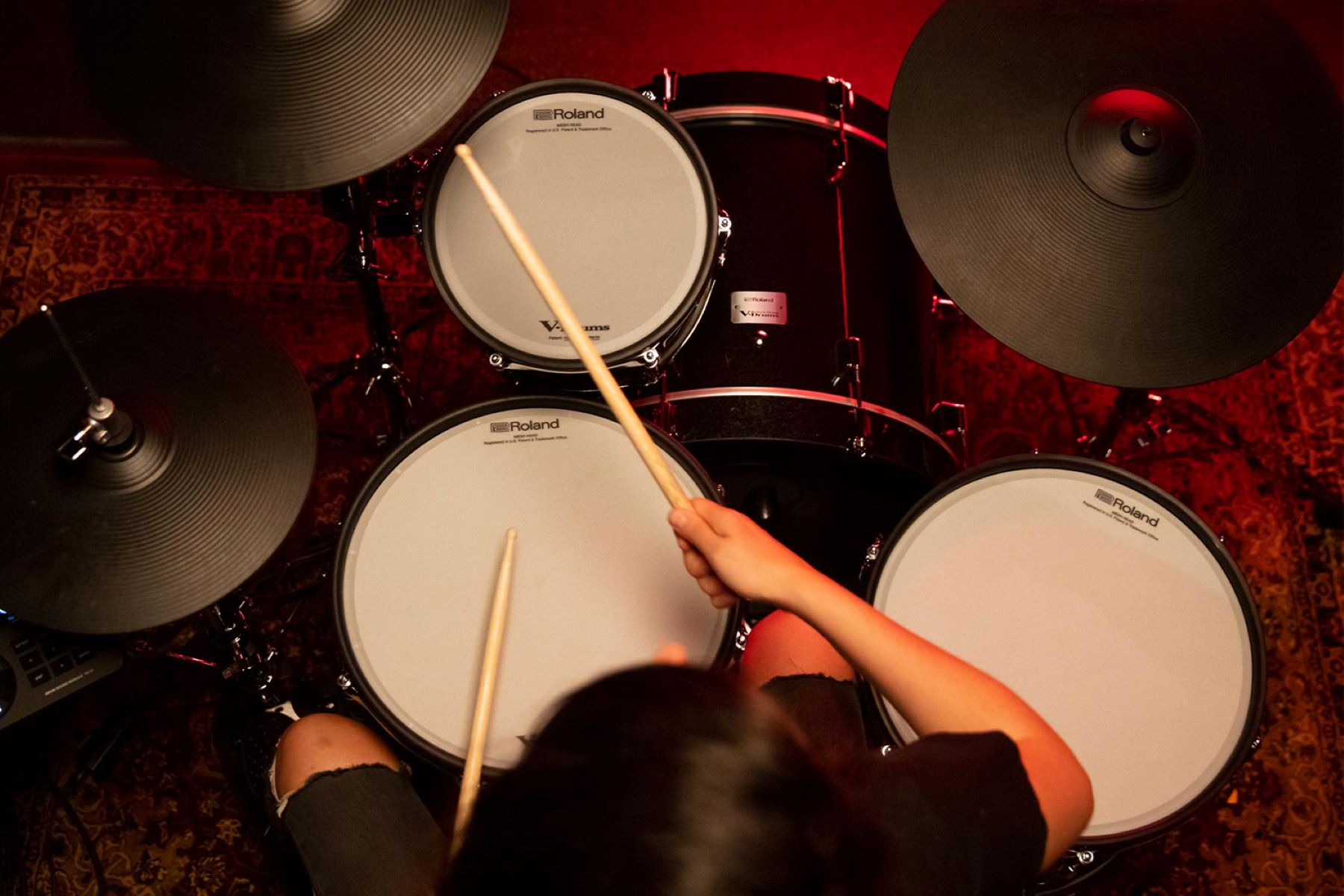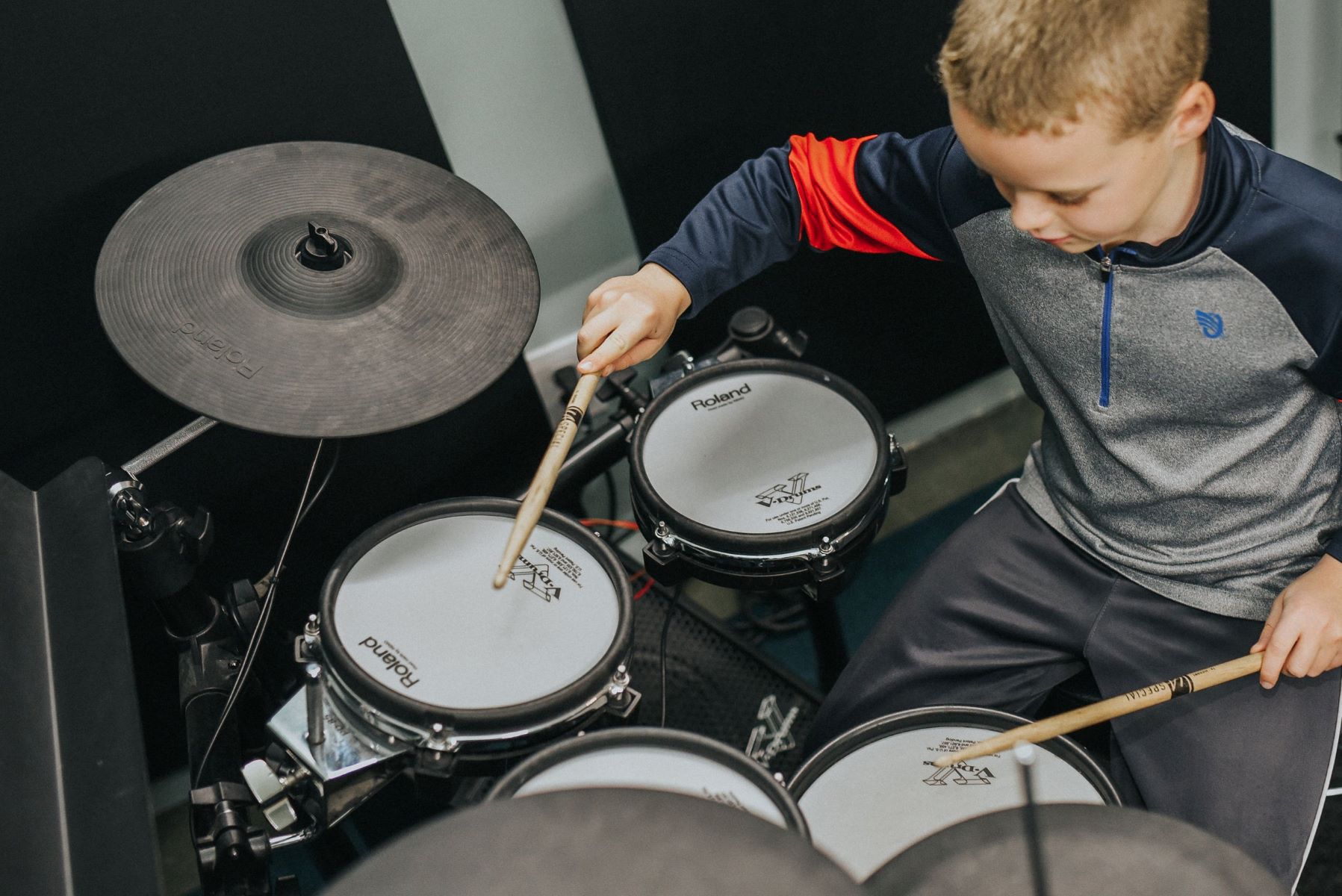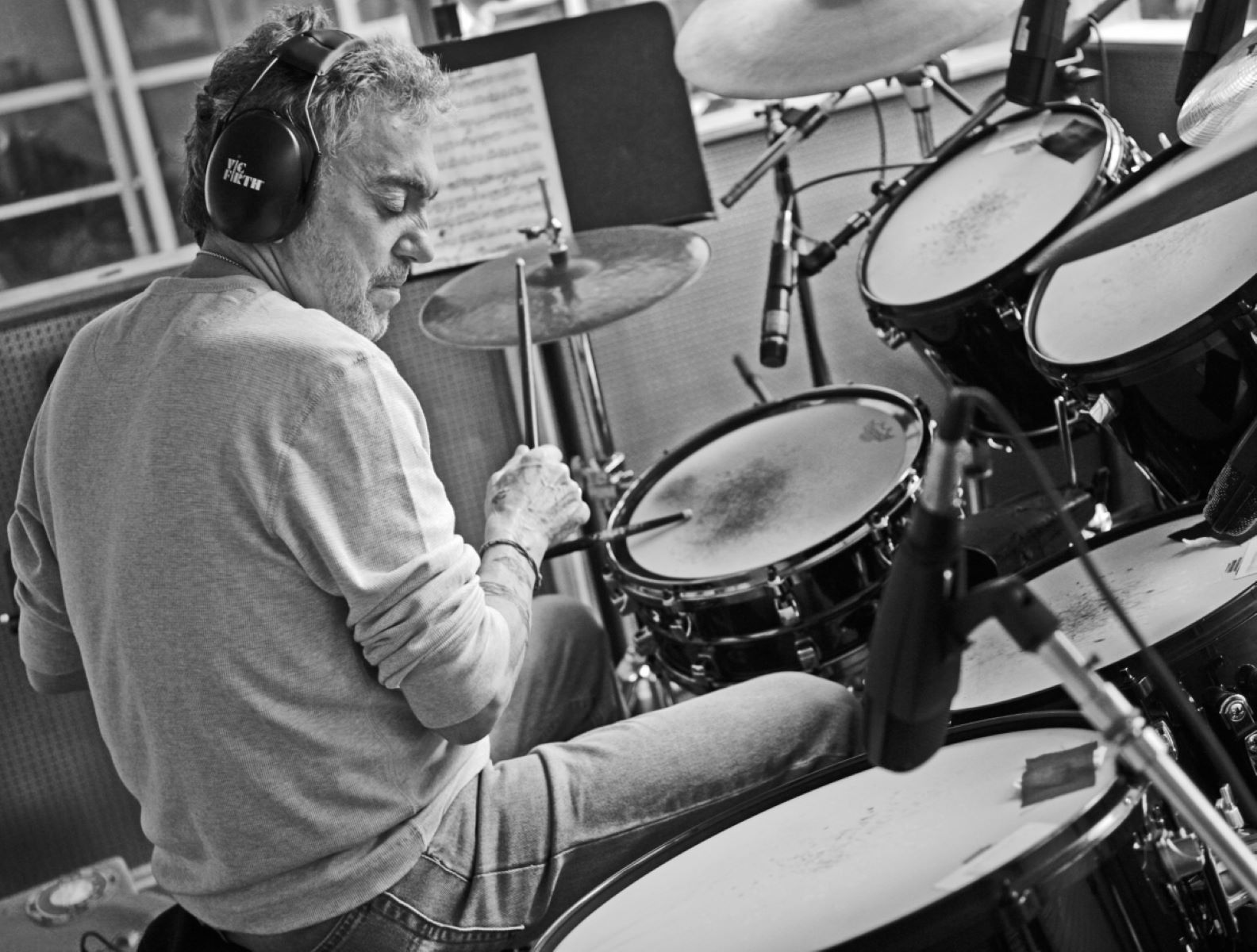Home>Instruments>Drums>How To Play The Drums


Drums
How To Play The Drums
Published: February 8, 2024
Learn how to play the drums with our comprehensive guide. Discover essential techniques, tips, and resources for mastering the art of drumming. Start your drumming journey today!
(Many of the links in this article redirect to a specific reviewed product. Your purchase of these products through affiliate links helps to generate commission for AudioLover.com, at no extra cost. Learn more)
Table of Contents
Introduction
Introduction
So, you’ve decided to dive into the world of drumming. Congratulations! Learning to play the drums can be an incredibly rewarding and exhilarating experience. Whether you’re drawn to the thunderous beats of rock and roll, the intricate rhythms of jazz, or the infectious energy of pop and hip-hop, the drums are a versatile and dynamic instrument that can add depth and excitement to any musical ensemble.
Playing the drums isn’t just about creating sound; it’s about creating a feeling, a pulse that drives the music forward and gets people moving. As a drummer, you have the power to set the tone, establish the groove, and elevate the entire musical experience. But before you can unleash your inner rhythm, it’s essential to understand the fundamentals of drumming, from choosing the right drum set to mastering essential techniques and developing your own unique style.
In this comprehensive guide, we’ll walk you through everything you need to know to kickstart your drumming journey. From selecting the perfect drum kit to honing your skills and exploring various drumming styles, we’ve got you covered. Whether you’re a complete novice or a seasoned musician looking to expand your repertoire, this guide will provide valuable insights and practical tips to help you become the drummer you’ve always wanted to be.
So, grab your drumsticks, find a comfortable seat behind the kit, and get ready to embark on an exciting and rhythmic adventure. Let’s dive into the world of drumming and unleash your musical potential!
Choosing the Right Drum Set
When it comes to choosing a drum set, there are several factors to consider to ensure that you find the perfect match for your playing style and musical preferences. Here are some essential tips to help you navigate the process:
- Consider Your Budget: Before you start shopping for a drum set, it’s crucial to establish a budget. Drum kits come in a wide range of prices, so determining how much you’re willing to invest will narrow down your options and prevent you from overspending.
- Determine the Configuration: Drum sets come in various configurations, typically including a bass drum, snare drum, tom-toms, and cymbals. Consider the style of music you want to play and the specific sounds you want to produce to determine the ideal drum set configuration for your needs.
- Explore Different Drum Shell Materials: The material of the drum shells significantly impacts the overall sound of the kit. Common materials include maple, birch, and mahogany, each offering distinct tonal characteristics. Research and listen to audio samples of different drum shell materials to identify the sound that resonates with you.
- Test-Drive Different Kits: If possible, visit a music store and try out different drum sets to get a feel for their sound, responsiveness, and overall playability. Pay attention to factors such as the quality of hardware, ease of tuning, and the overall comfort of the kit.
- Consider Add-Ons and Accessories: In addition to the core drum set, think about any add-ons or accessories you may need, such as drum thrones, hardware, and cases. Factoring in these additional components will give you a more accurate understanding of the total investment required.
By carefully considering these aspects, you can make an informed decision when selecting a drum set that aligns with your musical aspirations and provides a solid foundation for your drumming journey.
Setting Up Your Drum Kit
Once you’ve chosen the perfect drum set, the next step is to set it up correctly for optimal playability and comfort. Proper drum kit arrangement not only enhances your performance but also reduces the risk of physical strain and discomfort during extended playing sessions. Here’s a step-by-step guide to help you set up your drum kit:
- Position the Bass Drum: Start by placing the bass drum in a comfortable position directly in front of you. The beater should strike the center of the drum head, and the drum itself should be resting firmly on the ground.
- Arrange the Tom-Toms: Position the tom-toms to the right of the bass drum, ensuring that they are easily accessible without requiring excessive reaching. The smallest tom should be placed closest to you, followed by the larger toms as you move to the right.
- Place the Snare Drum: Position the snare drum between your legs at a height that allows for comfortable and natural stick movement. The drumhead should be parallel to the ground, and the snare wires should be engaged to produce a crisp and responsive sound.
- Set Up the Hi-Hat and Cymbals: Arrange the hi-hat stand to the left of the snare drum, positioning it at a height that enables smooth and effortless operation of the pedal. Place the crash and ride cymbals within easy reach on the right side of the kit, ensuring that they are securely mounted and do not interfere with your drumming motion.
- Adjust the Drum Throne: Set up the drum throne at a height that allows your legs to form a 90-degree angle when seated. This position promotes proper posture and reduces the risk of strain during extended playing sessions.
Once you’ve arranged the individual components of your drum kit, take the time to fine-tune the positioning and height of each element to suit your unique playing style and physical dimensions. Making these adjustments will ensure that you can play comfortably and confidently, allowing you to focus on honing your drumming skills without unnecessary distractions.
Basic Drumming Techniques
Mastering fundamental drumming techniques is essential for building a strong foundation and unlocking your potential as a drummer. These techniques form the building blocks for more advanced rhythms and styles, making them crucial for both beginners and experienced drummers looking to refine their skills. Here are some basic drumming techniques to focus on:
- Stick Control: Developing precise stick control is fundamental to producing consistent and articulate drum sounds. Practice holding the drumsticks correctly and focus on executing controlled strokes to achieve optimal sound quality.
- Bass Drum Technique: Whether using a single or double bass drum pedal, mastering bass drum technique involves coordinating foot movements with hand patterns to create powerful and precise rhythms. Work on developing speed, accuracy, and endurance with your bass drum playing.
- Snare Drum Rudiments: Practice essential snare drum rudiments such as single strokes, double strokes, paradiddles, and flams. These rudiments serve as the basis for more complex patterns and provide a solid framework for developing dexterity and coordination.
- Hi-Hat Control: Explore various hi-hat techniques, including open and closed patterns, foot splashes, and chick sounds. Mastering hi-hat control adds dynamic range and texture to your drumming, allowing you to create intricate and expressive rhythms.
- Cymbal Articulation: Experiment with different cymbal strokes and techniques to produce a diverse range of sounds, from crisp accents to sustained crashes. Understanding cymbal articulation enhances your ability to punctuate rhythms and add depth to musical passages.
Consistent practice and focused attention on these basic drumming techniques will lay the groundwork for your drumming journey, enabling you to progress with confidence and proficiency. Remember to start slowly, maintain a relaxed posture, and pay attention to your technique to develop good habits from the outset.
Learning Different Drumming Styles
Drumming is a remarkably diverse art form, encompassing a wide array of styles and genres, each with its own unique rhythms, techniques, and cultural influences. As you embark on your drumming journey, exploring different styles can broaden your musical horizons and provide valuable insights into the rich tapestry of rhythmic expression. Here are some prominent drumming styles to consider:
- Rock and Roll: Characterized by powerful backbeats, driving rhythms, and energetic fills, rock drumming demands a strong sense of groove and dynamic control. Focus on solid timekeeping, impactful accents, and the ability to propel the band with unwavering intensity.
- Jazz: Jazz drumming emphasizes improvisation, syncopation, and intricate polyrhythms. Mastery of brush technique, subtle ghost notes, and responsive interaction with other musicians are essential for capturing the nuanced essence of jazz rhythms.
- Funk: Funk drumming revolves around syncopated grooves, infectious bass lines, and precise use of ghost notes. Develop a deep pocket, explore complex rhythmic layers, and infuse your playing with a strong sense of funk and soul.
- Latin Percussion: Explore the vibrant world of Latin percussion, including styles such as salsa, samba, and bossa nova. Embrace the use of traditional percussion instruments, intricate polyrhythms, and lively grooves that reflect the rich cultural heritage of Latin music.
- Hip-Hop and R&B: In hip-hop and R&B drumming, focus on crafting tight, minimalist grooves, incorporating electronic sounds and samples, and creating infectious rhythms that form the backbone of contemporary urban music.
Each drumming style presents a unique set of challenges and opportunities for creative expression. By immersing yourself in diverse styles, you can expand your rhythmic vocabulary, refine your technical skills, and gain a deeper appreciation for the cultural and historical contexts that shape each musical genre.
As you explore different drumming styles, pay close attention to the nuances of each genre, study the work of influential drummers, and seek inspiration from a wide range of musical traditions. Embracing diversity in drumming styles will not only enrich your playing but also cultivate a deeper understanding of the universal language of rhythm.
Developing Your Drumming Skills
Embarking on a journey to develop your drumming skills requires dedication, discipline, and a passion for rhythmic expression. Whether you’re a beginner taking your first steps behind the kit or an experienced drummer seeking to refine your technique, continuous skill development is essential for unlocking your full potential. Here are some effective strategies for honing your drumming abilities:
- Structured Practice Routine: Establish a consistent practice schedule that encompasses various aspects of drumming, including rudiments, coordination exercises, groove development, and musical repertoire. Structured practice fosters steady improvement and helps you track your progress over time.
- Focus on Technique: Pay close attention to your drumming technique, ensuring that you maintain proper posture, grip, and stick control. Regularly practice exercises that target specific technical challenges, such as speed, dynamics, and limb independence.
- Ear Training and Musicality: Develop your ear for rhythm and musical phrasing by actively listening to a wide range of music. Transcribe drum parts, study rhythmic patterns, and strive to internalize the musical nuances that define different genres and styles.
- Collaborate with Other Musicians: Engage in musical collaborations with other instrumentalists and ensembles to enhance your ability to play in sync with different instruments and adapt to varying musical contexts. Collaborative experiences foster musical empathy and expand your rhythmic versatility.
- Seek Guidance and Feedback: Consider taking lessons from experienced drum instructors who can provide personalized guidance, constructive feedback, and tailored exercises to address your specific areas of improvement. Additionally, seek opportunities to perform in front of audiences and receive valuable feedback from peers and listeners.
Consistent and deliberate practice, combined with a willingness to embrace new challenges and musical experiences, is key to developing a well-rounded and expressive drumming style. As you progress on your drumming journey, remember to celebrate your achievements, stay open to continuous learning, and find joy in the rhythmic artistry that defines the drummer’s craft.
Tips for Improving Your Drumming Abilities
Enhancing your drumming abilities involves a combination of focused practice, musical exploration, and a mindset geared towards continuous improvement. Whether you’re aiming to refine your technique, expand your rhythmic vocabulary, or elevate your overall musicality, implementing the following tips can significantly contribute to your growth as a drummer:
- Stay Consistent: Establish a regular practice routine to maintain steady progress. Consistency is key to reinforcing muscle memory, refining skills, and developing a deep understanding of rhythm.
- Explore Diverse Genres: Broaden your musical horizons by delving into various genres and styles of music. Embracing diversity in your musical influences can inspire fresh ideas and enrich your rhythmic sensibilities.
- Record and Reflect: Record your practice sessions and performances to review your playing objectively. Reflecting on your recordings can help identify areas for improvement and track your development over time.
- Emphasize Dynamics: Focus on mastering dynamic control to infuse your playing with expressive nuances. Experiment with varying volumes, articulations, and accents to add depth and emotion to your drumming.
- Stay Open to Learning: Maintain a humble and receptive attitude towards learning from fellow drummers, instructors, and musical experiences. Embracing a lifelong learning mindset fosters continuous growth and artistic evolution.
- Stay Physically Fit: Drumming can be physically demanding, so prioritize physical fitness and proper posture to prevent injuries and play with endurance and ease.
- Experiment with Improvisation: Engage in improvisational exercises to develop spontaneity, creativity, and adaptability in your drumming. Improvisation nurtures musical freedom and enhances your ability to respond intuitively within a musical context.
- Seek Performance Opportunities: Look for opportunities to perform live, whether in jam sessions, open mic nights, or local gigs. Live performance experiences sharpen your stage presence, foster musical confidence, and provide valuable exposure to diverse audiences.
By integrating these tips into your drumming journey, you can cultivate a well-rounded skill set, nurture your artistic voice, and continually evolve as a versatile and expressive drummer.
Conclusion
Congratulations on embarking on an exciting and rhythmic journey into the world of drumming! As you’ve discovered throughout this comprehensive guide, the art of drumming encompasses a rich tapestry of techniques, styles, and musical expressions, offering boundless opportunities for creative exploration and personal growth.
From selecting the perfect drum set to honing fundamental techniques, exploring diverse styles, and continuously developing your skills, the path to becoming a proficient drummer is both challenging and immensely rewarding. Embracing the rhythmic intricacies of drumming allows you to connect with music on a profound level, serving as the heartbeat that drives musical compositions and captivates audiences.
Remember that your drumming journey is a unique and personal odyssey, shaped by your individual experiences, inspirations, and aspirations. Whether you aspire to rock the stage with thunderous beats, swing with the elegance of jazz, or groove to the infectious rhythms of funk and hip-hop, your dedication and passion for drumming will propel you toward musical excellence.
As you progress, stay open to new learning opportunities, seek inspiration from diverse musical sources, and remain committed to consistent practice and growth. Your journey as a drummer is a perpetual evolution, marked by milestones, breakthroughs, and an unwavering dedication to the rhythmic art form.
So, grab your drumsticks, set the stage ablaze with your rhythmic prowess, and let the pulse of the drums resonate with the joy of musical expression. Whether you’re drumming in the spotlight or jamming with fellow musicians, your rhythmic contributions will add depth, energy, and soul to the universal language of music.
Now, go forth and unleash the power of rhythm. The world awaits your beat!











